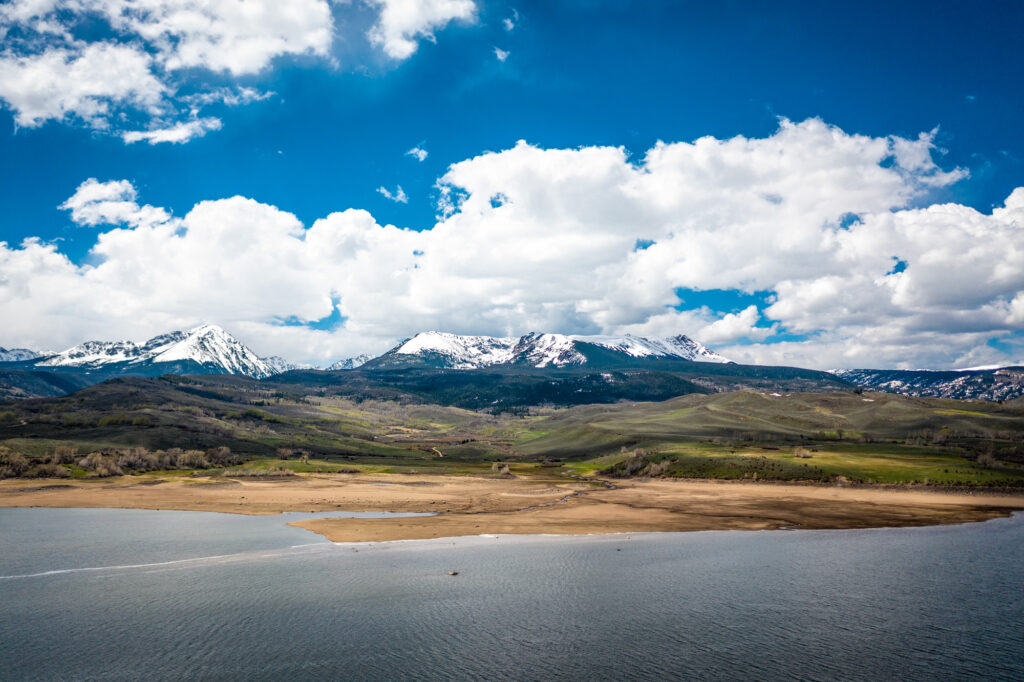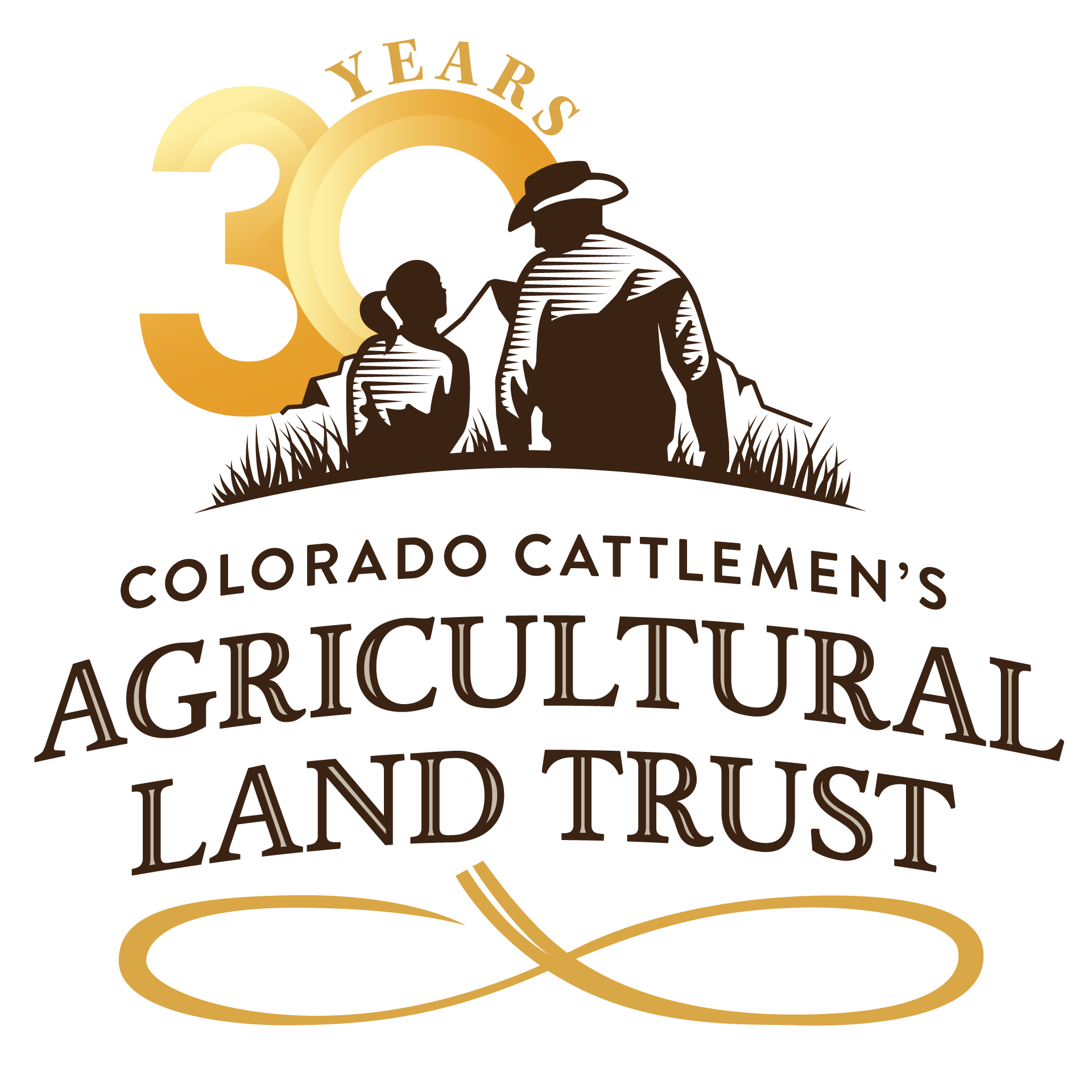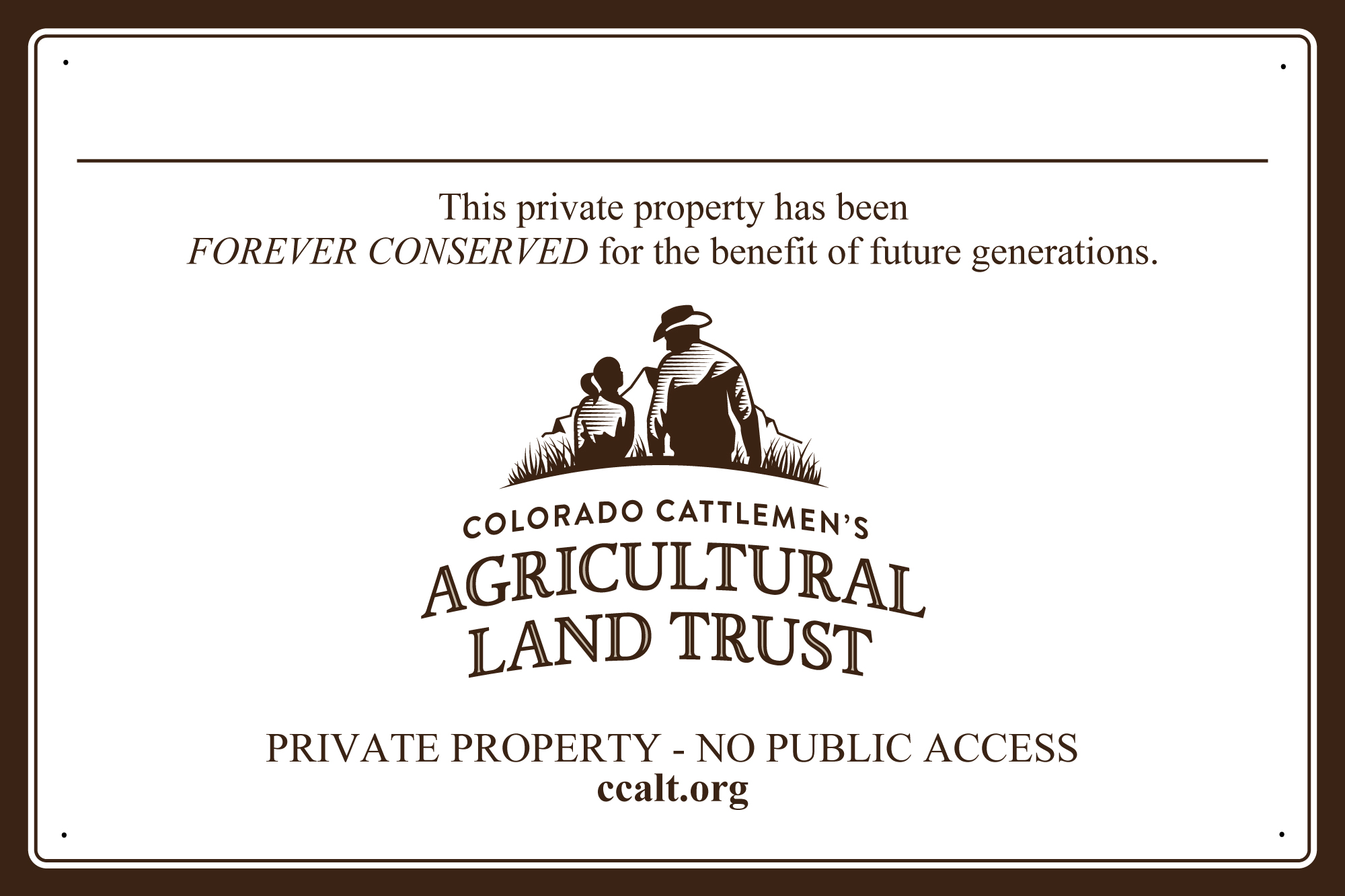Buying Property in Colorado? Consider A Conservation Easement.
By: Ken Mirr
CCALT Board of Directors Member
March 25, 2024
There’s nothing new about conservation easements, which first appeared in the 1930s as a tool for the federal government to protect scenic land. The general public increasingly used easements after they became tax deductible as a result of the Tax Reform Act of 1969.
The idea behind an easement is simple: It gives conservation-minded buyers and landowners the ability to protect open space, working ranches, and/or ecologically significant areas for future generations, while also offering a financial benefit. And there’s a critical need to conserve our precious land, especially when you see reports like that from the American Farmland Trust, which find that 175 acres of farmland are lost every hour in the United States — about 3 acres per minute.
Over the years a significant amount of land has been placed under easements, but it is still just a drop in the conservation bucket. Let’s take Colorado for example, which has the most robust conservation incentives in the nation. According to currently available data from COMaP managed by The Colorado Natural Heritage Program (CNHP) and the Geospatial Centroid at Colorado State University (CSU), 2.7 million acres of private lands have been protected with conservation easements in Colorado, but that only represents 6.8% of all private lands in the state. Further, Wyoming Public Media reported in 2023 that there were some 40 million acres of privately owned conservation easement lands nationally. That’s a lot of land, but the story noted that only 1% of Wyoming and 3.6% of Montana private land is under a conservation easement.

placing a conservation easement on property in Colorado
All of which means there are many opportunities to conserve land in the West. So, it’s only natural, if you are a landowner or would like to purchase land, to consider the everlasting value of creating a conservation easement. To better understand the benefit, let me explain how it works in my home state:
- In Colorado, the donation of a conservation easement to a certified land trust, such as the Colorado Cattlemen’s Agricultural Land Trust (CCALT), or a government agency creates federal tax deductions, as well as state tax credits. NOTE: Colorado is one of only three states that have a tax credit program for conservation easements.
- And Colorado is unique in that our state laws allow the landowner (donor of the easement) to either use the tax credit for him/herself or sell the credit to a third party.
- Selling a tax credit creates a win-win financial incentive for landowners and investors. Landowners are able to conserve their land, retain ownership, and earn cash for their conservation efforts, while investors with large tax liabilities are able to purchase the credits at a discount, effectively reducing their tax expense. (Read more)
- There are also several private, local, state, and federal funding sources that provide funding to purchase a portion of a conservation easement. In Colorado, these funding sources can be paired with the tax credit. The most significant funding source for conservation across the nation and the west is the Natural Resources Conservation Service’s (NRCS) Agricultural Conservation Easement Program (ACEP).More on this program below.
The Colorado easement tax credit program launched in 2000. Today, the program offers $45 million in tax credits annually to incentivize conservation, with a bill currently proposed in the 2024 Colorado General Assembly to increase this cap. Landowners who donate a conservation easement on their land can receive a tax credit for up to 90% of the value of the easement. Recent years have shown that there is a much higher demand for these credits and current efforts are underway to increase the tax credit cap in 2024.
Water rights can also be subject to an easement. In Colorado’s San Luis Valley, the owner of the 1,900-acre Peachwood Farms signed the state’s first voluntary groundwater conservation easement in late 2022. “The landmark legal agreement,” reported Circle of Blue, “enables … a substantial tax credit based on the value of 2,000 acre-feet of water used annually. In exchange, (the owner) is prohibited from pumping groundwater to irrigate his fields.” These new voluntary groundwater easements have significant opportunity to help Colorado and other western states address complicated water challenges.
And then there are agricultural easements. The Agricultural Conservation Easement Program (ACEP) administered by The United States Department of Agriculture’s (USDA) NRCS “provides financial and technical assistance to help conserve agricultural lands and wetlands and their related benefits” across the nation and in particular in Wyoming, Utah, Colorado, Montana, Idaho, New Mexico, and Nevada.
Potential buyers also have decisions to make when it comes to purchasing a property that is already under a conservation easement. For example: would the easement prevent a new owner from doing projects on the property that he or she had planned? And if the easement allows public access, would that be an issue for someone who wanted the land exclusively for themselves? Our friends at Colorado Cattlemen’s Agricultural Land Trust, for whom I serve as a board member, wrote an essay for us that goes into greater detail about the decision to include (or not include) public access in a conservation easement and how that impacts the value and function of the easement. Read it here.
Conservation in the west
Colorado, of course, is not the only state with conservation easement programs. Here’s a look at just some of the organizations facilitating easements in the Intermountain West:
- Wyoming: The Wyoming Stock Growers Land Trust focuses specifically on conserving agricultural lands, while the University of Wyoming offers a Conservation Toolkit for state landowners.
- Utah: TheorganizationUtah Open Lands works to permanently protect land in the state by acquiring title or trust of a conservation easement.
- Montana: The Montana Land Alliance has worked with landowners to negotiate nearly 1,000 conservation easements on over 1.2 million acres of land in the state. The Montana Association of Land Trusts is comprised of 12 nonprofit land trusts that support excellence in private voluntary land conservation in the state.
- Idaho: The Idaho Coalition of Land Trusts is is a group of 20 nonprofit land trust organizations and affiliate members working on private land conservation and voluntary conservation throughout the state.
Given all these resources, it’s no surprise that a growing number of potential buyers ask real estate brokers about easements. It’s also a popular subject on the MIRR Ranch Group website. For example, The Myths Surrounding Conservation Easements was one of the top five most downloaded podcasts on the Mirr Ranch Group website in 2023 (Listen here) That podcast was inspired by an essay in the Colorado Sun that highlighted some of the misinformation surrounding conservation easements.
There’s a lot to learn when it comes to determining the merits of a conservation easement. Conservation tax credit systems are complex, and you should always consult with legal, financial, and tax experts and reputable land trusts. At Mirr Ranch Group we have extensive experience guiding landowners through the entire conservation process, so contact us if we can be of assistance.

